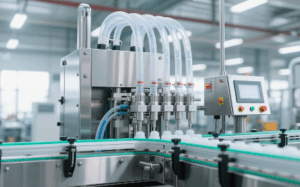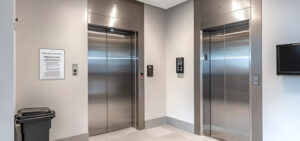Packaging machine manufacturer insights emphasize that proper maintenance is crucial for extending the operational lifespan of packaging machines. These machines are fundamental in modern production lines, ensuring efficiency, precision, and consistent product quality. Improper care can lead to frequent breakdowns, reduced performance, and costly repairs. To maintain optimal performance, it is important to implement a structured maintenance strategy. This article provides a comprehensive guide covering preventive maintenance, operator training, spare parts management, technological integration, environmental considerations, and practical tips for long-term machine care.

Table of Contents
TogglePreventive Maintenance Strategies
Preventive maintenance is the cornerstone of long-term machine reliability. According to packaging machine manufacturer recommendations, regular inspections and servicing help identify potential problems before they escalate, minimizing downtime and extending machine life.
Key Preventive Practices:
- Lubrication of Moving Parts
Packaging machine manufacturers suggest using the recommended types of lubricants and following scheduled lubrication intervals. This not only prevents component failure but also improves energy efficiency.
- Component Inspection and Replacement
Timely replacement of worn components prevents cascading failures that could halt production.
- Cleaning and Debris Removal
Dust, product residue, and debris can interfere with the machine’s operation. Routine cleaning ensures smoother performance, reduces contamination risk, and minimizes stress on moving parts. Specialized cleaning tools and gentle cleaning agents are recommended to protect sensitive components.
- Calibration and Alignment
Accurate calibration ensures that filling, sealing, and labeling functions meet design specifications. Misalignment can lead to product inconsistencies, wasted materials, and mechanical strain, reducing overall machine lifespan.
Operator Training and Daily Practices
Packaging machine manufacturers highlight that human factors often contribute to preventable machine failures. Comprehensive training programs should include operational procedures, safety measures, and basic troubleshooting.
Training Focus Areas:
- Proper Machine Operation
Understanding startup, shutdown, and emergency procedures prevents excessive strain on components and reduces operational errors. Operators should also be aware of optimal operating speeds and load limits.
- Routine Troubleshooting
Training operators to identify early warning signs such as unusual noises, vibration, or inconsistent product flow helps prevent serious damage. Quick intervention often saves both time and cost.
- Safety Compliance
Ensuring adherence to safety protocols reduces accidents, protects operators, and indirectly contributes to machine longevity by avoiding misuse.
Spare Parts and Maintenance Planning
Packaging machine manufacturers advise keeping commonly used parts, such as belts, seals, motors, sensors, and electronic components, in stock.
Benefits of Spare Parts Management:
- Reduced Downtime
Immediate access to essential parts allows repairs to be completed promptly, maintaining production schedules.
- Cost Savings
Preventing emergency orders reduces expenses and avoids extended delays that could disrupt operations.
- Consistent Production Quality
Ready availability of replacement parts ensures machines operate at peak efficiency and maintain product quality.
- Long-Term Planning
Tracking part usage and lifespan helps forecast future needs, ensuring that replacements are budgeted and available before failures occur.
Leveraging Technology for Maintenance
Modern technological solutions enhance packaging machine maintenance. Predictive maintenance systems, IoT sensors, and real-time monitoring provide early detection of potential failures, improving machine reliability.
Technological Advantages:
- Predictive Insights
Data-driven monitoring can identify patterns such as excessive vibration, temperature fluctuations, or motor load anomalies, allowing preventive actions before failures occur.
- Optimized Maintenance Scheduling
Automated alerts and scheduling software help plan maintenance efficiently, reducing production interruptions.
- Resource Efficiency
Technology streamlines routine inspections, logging, and performance analysis, saving labor costs and improving maintenance accuracy.
- Remote Monitoring Capabilities
Some systems allow technicians to monitor machines remotely, detecting issues without needing physical inspection, which saves time and reduces response delays.
Environmental Factors for Machine Longevity
The operating environment greatly affects the lifespan of packaging machines. Temperature, humidity, dust, and vibration can impact both mechanical and electronic components.
Best Practices for Environmental Control:
- Clean Surroundings
Keeping the area dust-free reduces the risk of debris entering the machine, which can affect moving parts and sensor accuracy.
- Vibration and Shock Reduction
Installing machines on stable, vibration-free surfaces prevents mechanical stress, maintains alignment, and reduces wear on moving components.
- Proper Ventilation
Ensuring sufficient airflow helps dissipate heat generated during operation, reducing overheating and extending component life.
Specific Machine Maintenance Examples
To provide practical insights, here are detailed maintenance strategies for two common packaging machines: filling machines and capping machines. Proper care ensures smooth operation, reduces downtime, and extends equipment lifespan.
Filling Machine Maintenance:
- Daily Checks
Check nozzles and valves for clogs and wipe contact surfaces to prevent contamination.
- Preventive Maintenance
Lubricate moving parts and replace worn seals or gaskets regularly to maintain accurate filling.
Capping Machine Maintenance:
- Daily Checks
Inspect the cap feed system for jams and verify torque settings to ensure lids are secure.
- Preventive Maintenance
Lubricate bearings and gears, and replace worn capping heads or guides as needed.
Conclusion
Extending the lifespan of packaging machines requires a comprehensive approach. By implementing preventive maintenance, operator training, spare parts management, technological integration, environmental control, and practical operational tips, production facilities can ensure reliable, efficient, and safe machine operation.
Insights from packaging machine manufacturers provide guidance on best practices, enabling manufacturers to reduce downtime, maintain product quality, and optimize long-term operational efficiency. Following these strategies allows production facilities to maximize the value of their packaging equipment while supporting sustainable, high-performance operations for years to come.
0


